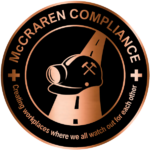
Washington — The most common crane-related hazards – and how technology may help solve them – are detailed in a new report from the National Safety Council’s Work to Zero initiative and the NCCCO Foundation.
Understanding the Current State of Safety Hazards in the Crane Industry is based on survey responses from more than 2,200 certified crane operators and inspectors. Among the findings:
Top hazardous situations: working at height, vehicle-pedestrian interactions, and loading and unloading materials. Between 55% and 89% of respondents said they were likely or very likely to be exposed to these circumstances. In 2020, NSC found these three hazardous situations resulted in 30% of non-roadway workplace deaths.
Most common causes of injury: falls from height and being struck by a falling object
Most common risks: heat stress and fatigue
Safety training and compliance: Four out of 5 of the respondents believe they have access to the proper safety training before starting a task, but lack of proper training still accounted for 7% of personal injuries and 8% of onsite injuries.
Technology implementation: The use of drones, proximity sensors and vital sign wearables is fairly low. Depending on the specific type, only 1% to 13% of the respondents reported using technology at jobsites.
“However, many of those surveyed indicated a willingness to try new safety technology solutions, while the primary barrier to adoption was concern over data privacy,” NSC says.
Wearables – one of the technological solutions identified in the report – may help reduce fatigue- and heat stress-related risks. Employers also should provide training on recognizing the signs and symptoms of heat stress and fatigue.
For falls from height or struck-by hazards, fall protection training and using drones for inspections and visualization are some ways to mitigate risks.
“The crane industry can be dangerous and more must be done to protect workers in this industry,” said Katherine Mendoza, senior director of workplace programs at NSC. “That’s why we have teamed up with the NCCCO Foundation to better understand the main causes of injuries in this field and explore the role that technology can play to eliminate these risks.
“By understanding these risks and the current state of innovation in the crane industry, we can now explore how to help the industry adopt safety technology and how innovation combined with training and educational resources can make a significant difference in preventing injuries before they occur.”
McCraren Compliance offers a full range of safety and health training and consulting services. Plus we can help you incorporate well-being into your traditional systems in order to support the Total Worker Health of your workforce.
Call 888-758-4757, email info@mccrarencompliance.com or visit our website www.mccrarencompliance.com
Original article published by Safety+Health an NSC publication


